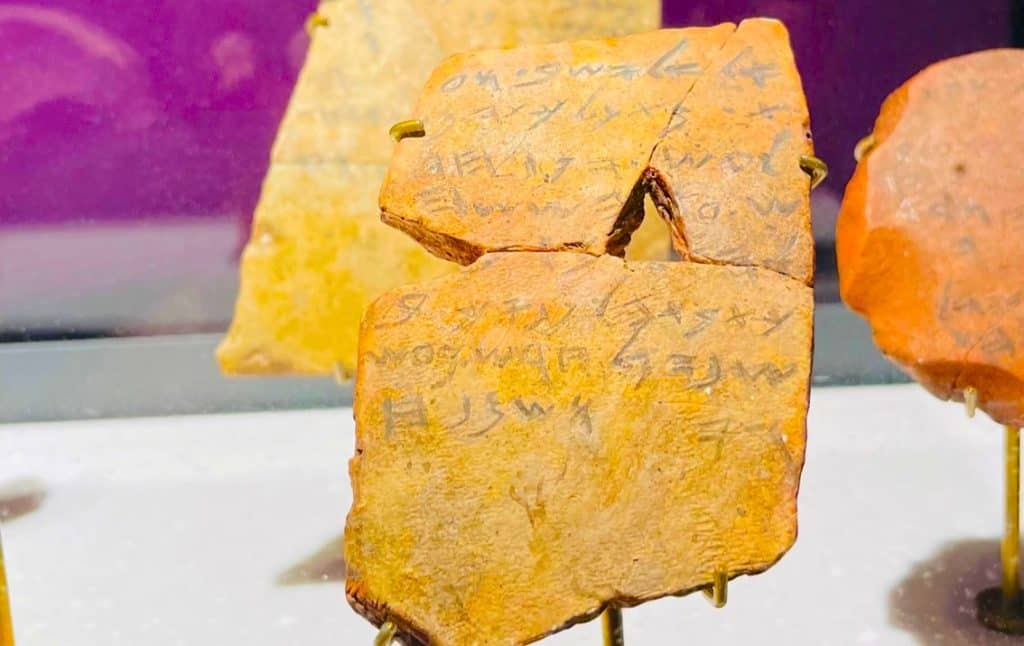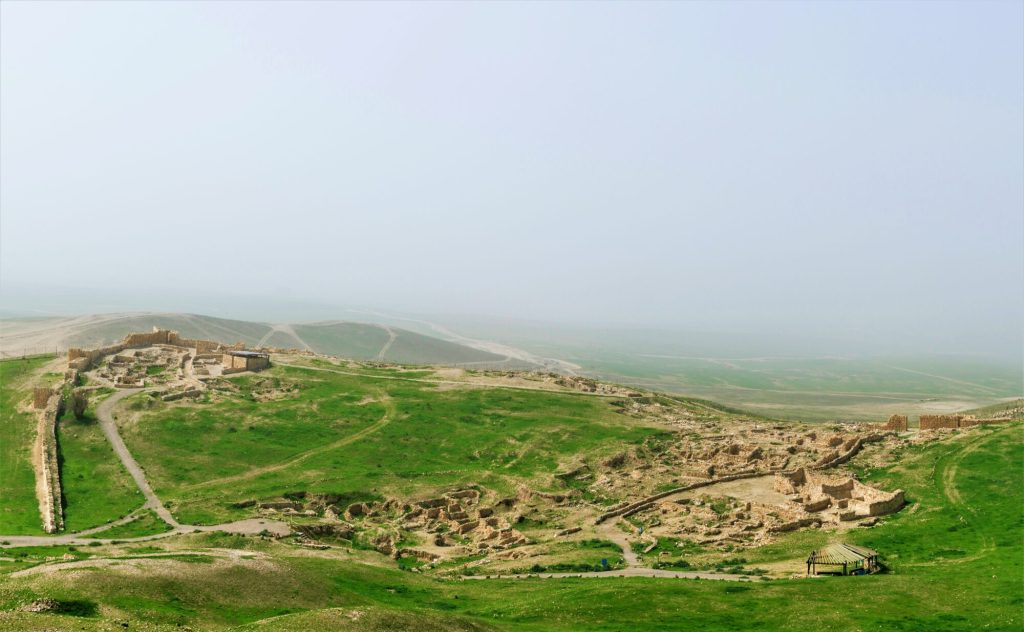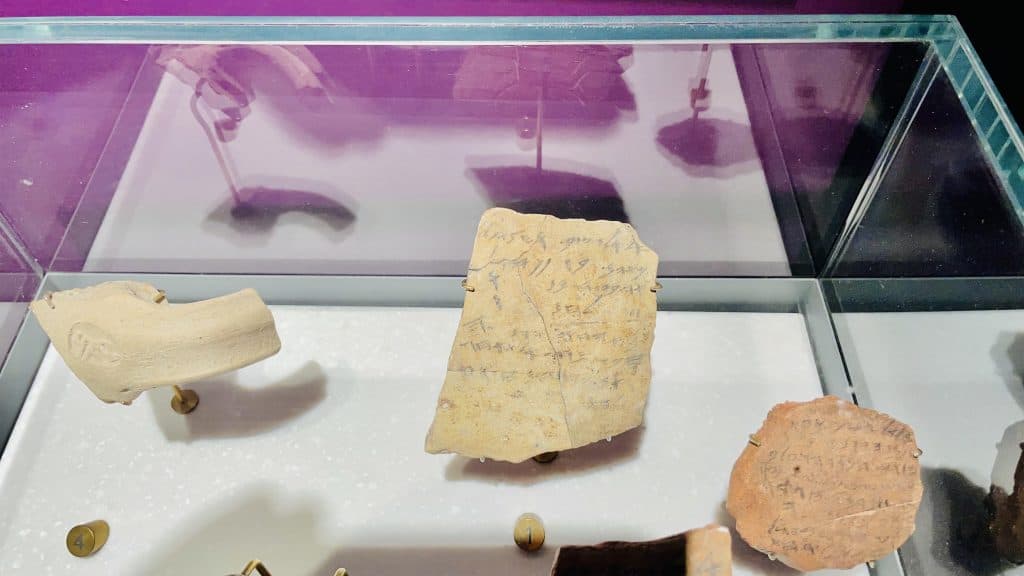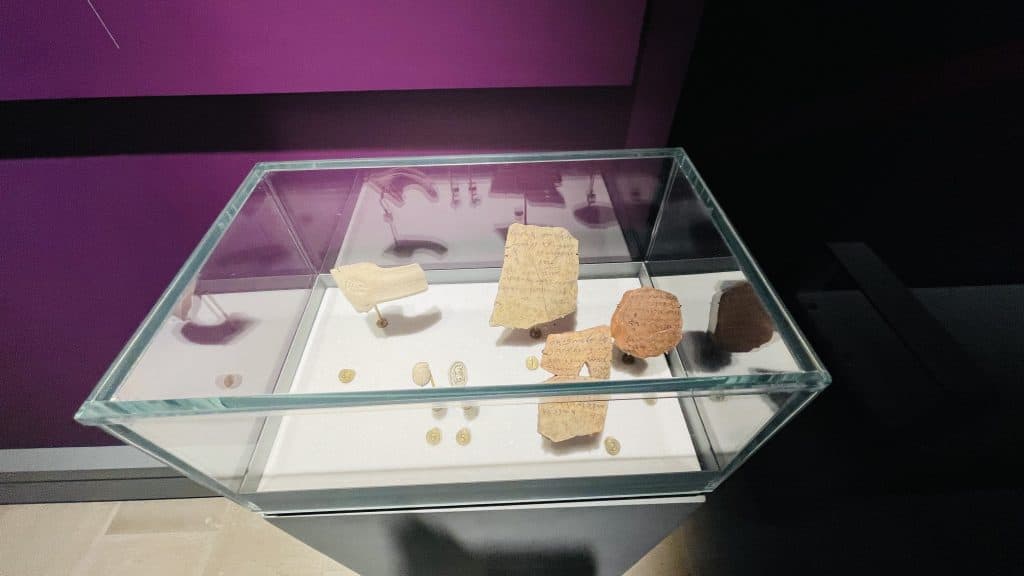The Arad ostraca, also known as the Eliashib Archive, is a collection of ancient Hebrew inscriptions discovered in 1965 by Israeli archaeologist Yohanan Aharoni during excavations in the ancient fortress of Arad, located in southern Israel. The ostraca date back to the 7th century BCE and provide valuable insights into the daily life and administration of the Judahite kingdom during the First Temple period.

The Arad ostraca consist of over 100 inscribed pottery shards, or ostraca, used as a form of written communication in ancient times. The inscriptions are written in Hebrew using ink and include various content, from military orders and administrative reports to personal letters and requests for supplies.
Tel Arad National Park

Among the Arad ostraca, one of the most significant finds is the Eliashib Archive, a collection of ostraca found in a fortress room that served as an administrative center. The ostraca are believed to have been written by a scribe named Eliashib, who was in charge of the fortress’s provisions and supplies. The archive includes several orders for food and other supplies and reports on distributing rations to soldiers and other personnel.
The Eliashib Archive also provides a glimpse into the religious practices of the Judahite kingdom during the First Temple period. Several of the ostraca mention the name “Yahweh,” suggesting that the worship of the goddess Asherah was still prevalent in Judah then.

Overall, the Arad ostraca are an essential source of information for scholars studying the history and culture of ancient Israel. They offer insights into the daily life of people living in the region during the First Temple period, as well as the military and administrative practices of the Judahite kingdom. The Eliashib Archive is a valuable resource for understanding the logistics and organization of a military fortress during this period.
Arad Ostraca: Letter 18 – House of Yahweh
One of the Arad ostraca that have attracted particular attention is Ostracon 18, also known as the “House of Yahweh” ostracon. This ostraca was discovered in 1965, alongside the other Arad ostraca, and is believed to date back to the late 7th century BCE.
The “House of Yahweh” ostracon contains an inscription in ancient Hebrew that mentions a “house” or “temple” of Yahweh, which was likely a place of worship dedicated to the god Yahweh.

The inscription reads: “To my lord Eliashib: May Yahweh seek your welfare. And now, give [orders] that they send the food [supplies] which the soldiers need to the house of Yahweh, if there is any righteousness in your eyes.” The text is a request from an unknown person to the fortress commander, Eliashib, to send supplies to the “house of Yahweh.”
It is not entirely clear what the “house of Yahweh” refers to – it could have been a temple, shrine, or even a private home dedicated to the worship of Yahweh. However, mentioning “righteousness” suggests the request may have had a religious context.
The discovery of this ostracon has shed light on the religious practices of the Judahite kingdom during the First Temple period. It confirms the existence of a cultic center dedicated to the god Yahweh outside of Jerusalem and provides evidence for the widespread worship of Yahweh throughout Judah at this time. It also suggests that the temple or shrine needed food supplies, which may indicate that it was a significant worship site with a large congregation.







